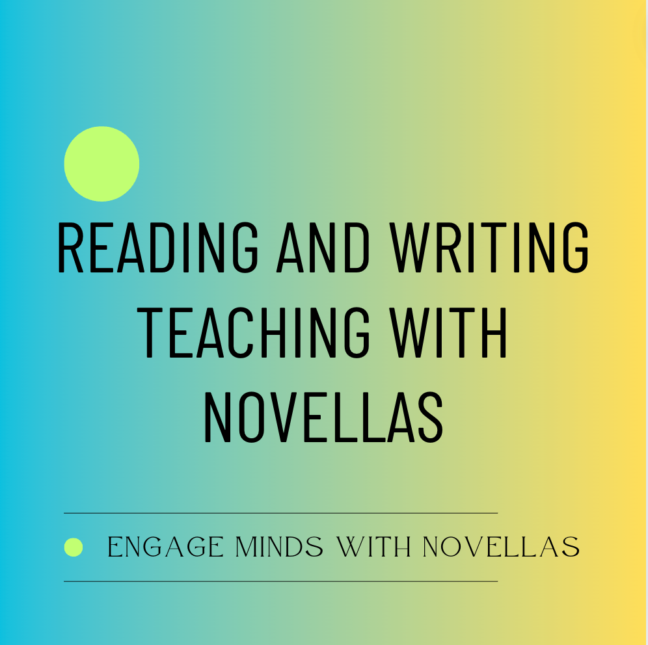by Marcela Velikovsky
“Novels in the Centre” is a column of Language Teaching Lab where you will read about why, how and what novellas become meaningful resources for teaching a language
If we learn to walk by walking and to talk by talking, we can also learn to read and write in another language by reading and writing in that language.
That is why I love teaching Spanish and I love teaching with novellas!
How is Reading and Writing Teaching with Novellas for me
I start by building the necessary background knowledge to facilitate students’ understanding of the story. Depending on the novella, I focus on the social-economic, historical or geographical aspect. For example, before reading “Patricia va a California” students research about Guatemala.
When we read it is important to check students’ comprehension often to avoid misinterpretation and help them construct meaning beyond unknown words.
When we read it is important to check students’ comprehension often to avoid misinterpretation and help them construct meaning beyond unknown words. I ask them comprehension questions sometimes in English and sometimes in Spanish. I explain new vocabulary and phrases in context and when I model reading aloud, I verbalize my thinking and ask for their opinion. “Hmmm, I wonder if Patricia…” What do you think?” Do you think she will… or…?
When I’m sure they grasp the story in a chapter, we analyze, explain, compare and contrast characters and places. For example, Patricia’s house has only one bathroom for seven family members living there. This is something common in Latin America that shocks most students who are used to bigger houses with multiple bathrooms.
Go deeper when re-reading chapters
We annotate, represent, and talk and write about the topics and themes in the novella. For example, Patricia, the main character, is being discriminated against for being Latina. While she’s Guatemaltecan, Debbie, one of the characters, calls her “Mexican.” This leads us to talk about identity, immigration and discrimination. Students make personal connections and read current events articles and watch short videos in Spanish related to the topic and theme.
Assessment Tasks
The novella becomes the center from which I derive multiple communicative tasks related to each chapter. For example, I’ve used the following task as an assessment:
Pick ONE of the following points and write a paragraph in Spanish based on the information given in Chapter 8:
Point A – When Patricia talks with Debbie at the party, she says that while many people think being poor is a terrible thing, she has “everything” and “she does not need anything else.” What does Patricia consider the most important things in her life?
Point B – What do you think are the most important things in your life? Why?
Point C – Imagine you’re Patricia. Write a letter to a friend in Guatemala telling her/him all about the robbery.
This way, students empathize with the characters in the novella and see the world from different perspectives.
Novellas are Key for Language and Culture Learning
Students focus so much on the characters and the plot that don’t realize how much language they are absorbing. Novellas are great not only from the point of view of language acquisition, but also to immerse students in the culture and other people’s realities through the life experiences of the characters. I also use novellas as a springboard for class discussions of current events that relate to the topics and themes developed in the novellas.
Resources
Patricia va a California (Spanish Edition) – As an Amazon Associate LTL earns from qualifying purchases
